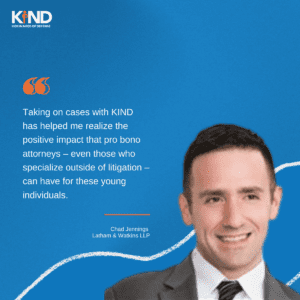I am a Teacher of the Deaf who was asked to assist in the case of a deaf child seeking asylum after attempts with a formal interpreter were unsuccessful due to the client’s limited language abilities. In the case of this client, who had no access to formal language prior to age 14, language alone was not sufficient at helping her understand her role in the legal process or to tap into her visual memories from a time when she had no means of labeling what she was seeing. Therefore, I had to find a deeper way to try and connect with this client to help her navigate the complexities of the asylum process and tell her captivating story of how she came to the US. Through collaboration and teamwork with a friend who was a certified interpreter with years of experience working with deaf immigrants with limited language abilities, I had the chance to witness the power of language immersion. Immersion is more than simply the passing of a spoken or signed message back and forth to communicate, but rather it is the incorporation of actions, gestures, pictures, drawings, and any other modality possible to help someone understand a message/concept and formulate a response. It was through true language immersion that we were able to capture a remarkable story based solely on what the client had observed visually, or the few simple gestures used by her family members to direct her, in order to create her declaration for asylum. Language is powerful when it creates a shared understanding of the message being conveyed.




